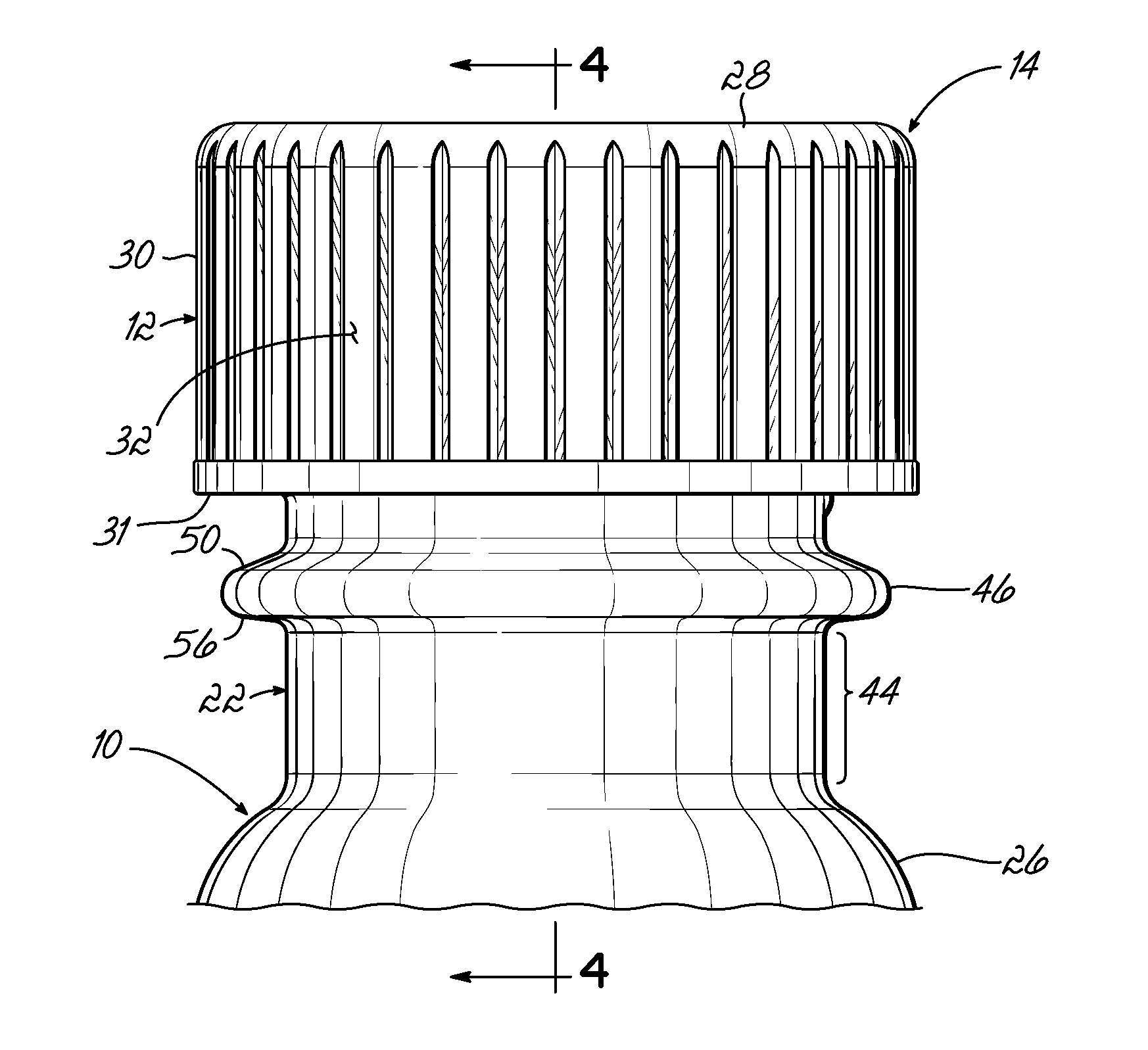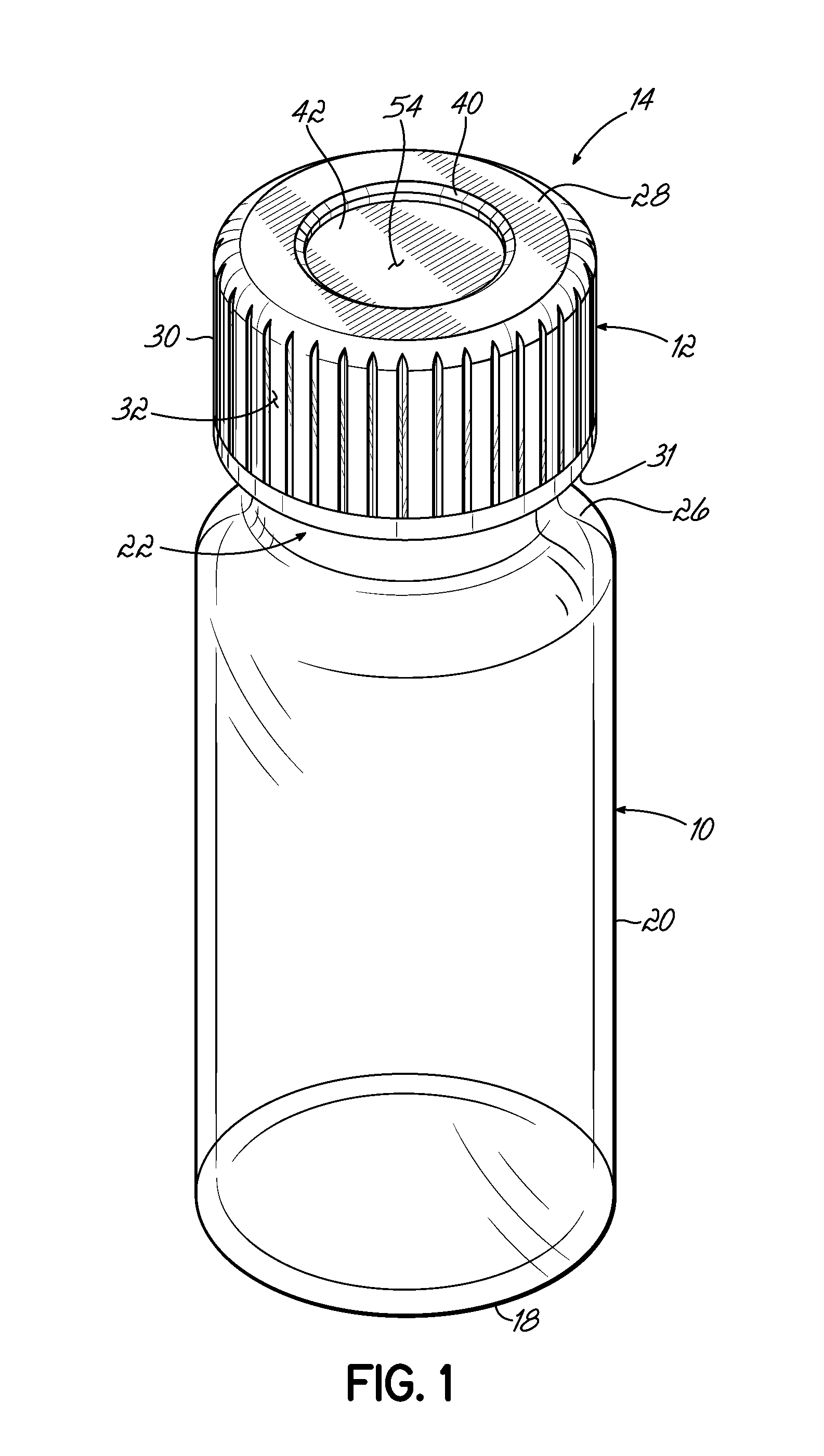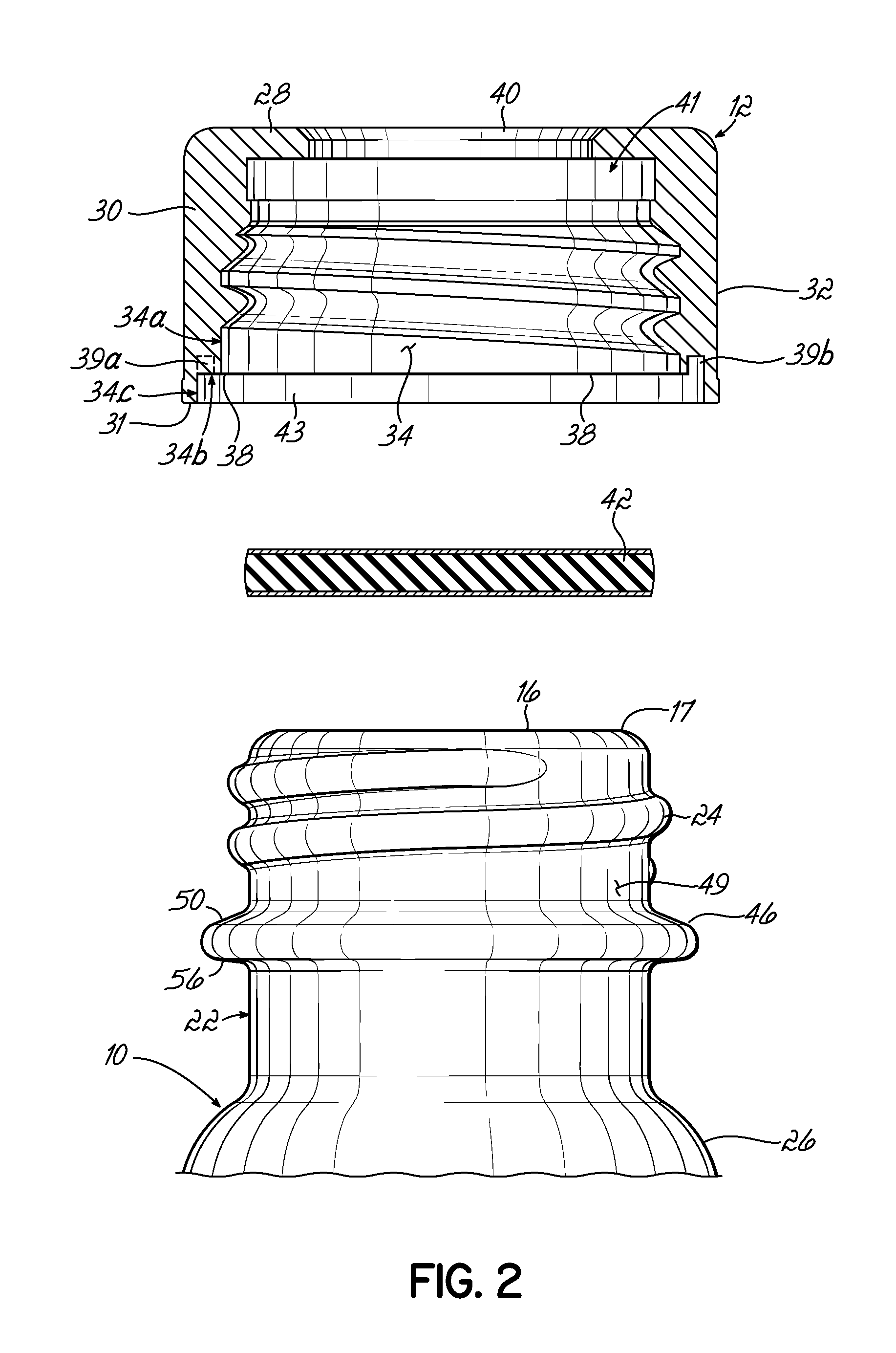Over-torque resistant vial
a technology of over-torque and vial, which is applied in the direction of caps, liquid handling, laboratory glassware, etc., can solve the problems of fluids escaping from the vial via spillage and/or evaporation, and it is difficult to apply a consistent amount of torque to a plurality of closures and vial assemblies. , to achieve the effect of reducing the risk of septum coring and/or bending, and reducing the tilt of the closur
- Summary
- Abstract
- Description
- Claims
- Application Information
AI Technical Summary
Benefits of technology
Problems solved by technology
Method used
Image
Examples
Embodiment Construction
[0031]Turning now to the figures, and in particular to FIGS. 1 and 2, a vial 10 and a closure 12, collectively referred to as a vial and closure assembly 14, are shown according to one embodiment of the present invention. The vial 10 and the closure 12 may be configured as a labware product, such as a 2 mL chromatography vial for example, for use with manual or automatic (including robotic) analytical instruments.
[0032]In one embodiment, the vial 10 is comprised of a hollow structure for the containment of a fluid and includes an open end 16 defined by a vial rim 17 (FIGS. 4 and 5) and a closed end 18. The open end 16 of the vial 10 may be generally circular and the hollow structure of the vial 10 may be constructed of glass, plastic, or other suitable material that is inert with respect to the fluid contained therein.
[0033]An outer surface of the vial 10 proximate the open end 16 (FIG. 3) may include at least one outer thread 24 (FIGS. 2-5) comprising, for example, an 8-425 thread,...
PUM
| Property | Measurement | Unit |
|---|---|---|
| thickness | aaaaa | aaaaa |
| thickness | aaaaa | aaaaa |
| over-torque | aaaaa | aaaaa |
Abstract
Description
Claims
Application Information
 Login to View More
Login to View More - R&D
- Intellectual Property
- Life Sciences
- Materials
- Tech Scout
- Unparalleled Data Quality
- Higher Quality Content
- 60% Fewer Hallucinations
Browse by: Latest US Patents, China's latest patents, Technical Efficacy Thesaurus, Application Domain, Technology Topic, Popular Technical Reports.
© 2025 PatSnap. All rights reserved.Legal|Privacy policy|Modern Slavery Act Transparency Statement|Sitemap|About US| Contact US: help@patsnap.com



